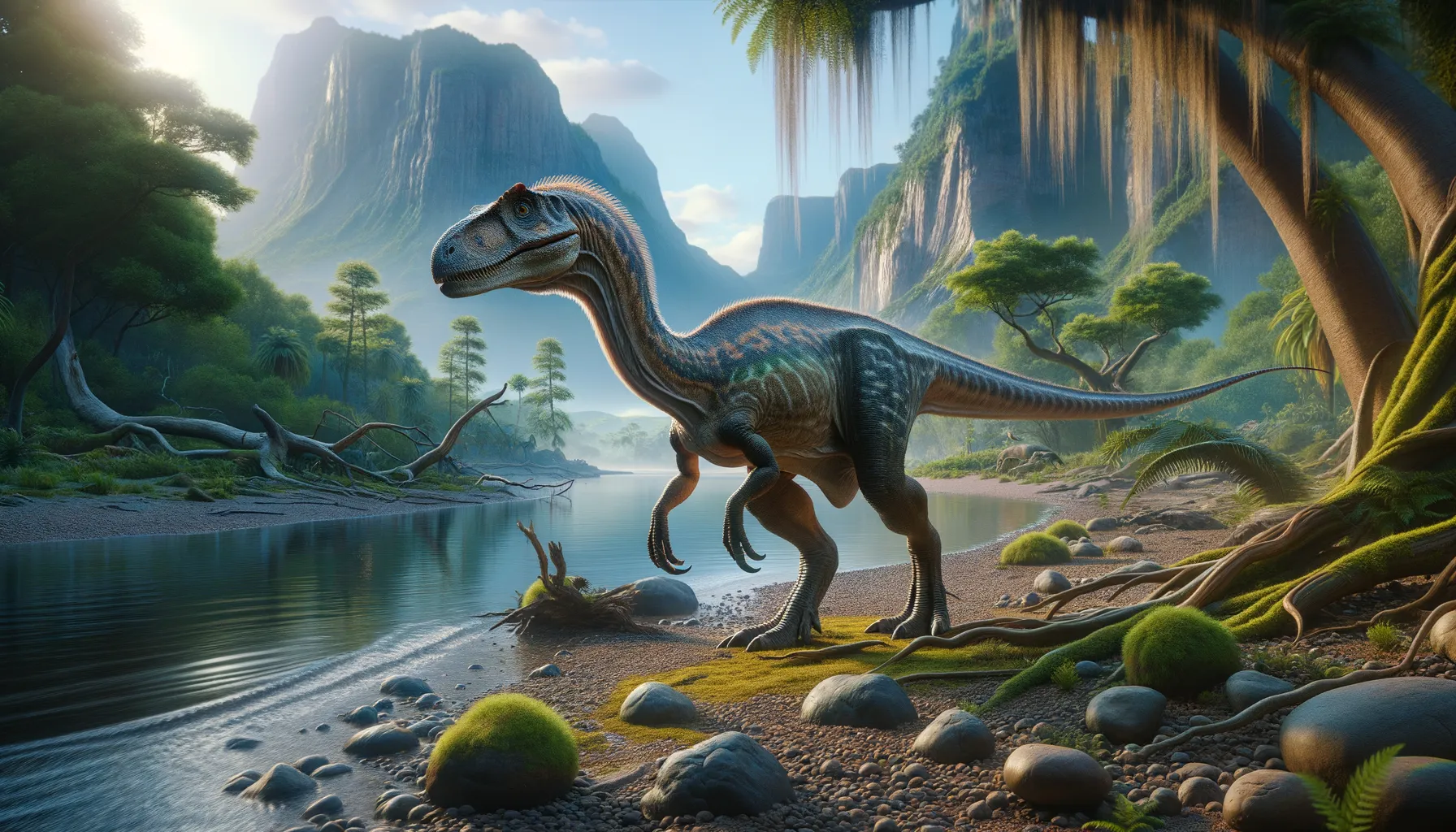
Xixiposaurus
Agile survivor from the Jurassic era.
Period
Jurassic
Length
Approximately 3 meters in length.
Height
Stood about 1 meter tall.
Weight
Estimated to weigh around 25 kilograms.
Xixiposaurus was a small theropod dinosaur that roamed the Earth during the Jurassic period. It is known for its slender build and agility, aiding in its survival. Primarily a herbivore, Xixiposaurus displayed a unique lifestyle compared to its more carnivorous theropod relatives. Fossil evidence found in China has provided insights into its structure and habits, making it a fascinating subject for paleontologists.
Diet
Xixiposaurus was primarily herbivorous, feeding on low-lying plants and foliage. Its diet may have also included insects or small animals, giving it a varied dietary pattern.
Hunting
With a mainly herbivorous diet, Xixiposaurus was not a traditional hunter. However, it might have foraged efficiently in dense vegetation, using its agility to navigate tight spaces.
Environmental challenges
Xixiposaurus faced challenges such as fluctuating climates and the presence of larger predators. The change in plant types during the Jurassic may have required dietary adaptability. Survival depended on avoiding detection by larger carnivores of the period.
Speed
Believed to have been moderately fast due to its lightweight body.
Lifespan
Estimated to have lived for around 20 years.
First discovery
Discovered in 2005 in China by paleontologists Xu and Wang.
Fun Facts
- Xixiposaurus was a relatively small dinosaur, roughly the size of a large chicken.
- This dinosaur lived during the Jurassic period, around 160 million years ago.
- Xixiposaurus is known for its long, slender neck, which helped it reach vegetation.
- The fossils of Xixiposaurus were discovered in Yunnan Province, China.
- Despite its small size, Xixiposaurus was a member of the theropod group, which includes giants like T. rex.
- It was a herbivore, feeding primarily on plants, contrasting with more famous carnivorous theropods.
- Xixiposaurus shares some characteristics with early birds, hinting at the evolutionary link in their lineage.
Growth and Development
Xixiposaurus exhibited relatively rapid growth, reaching maturity at a smaller size compared to larger theropods. Juveniles may have relied on speed and agility for protection. Its social structure likely influenced developmental stages as well.
Habitat
Xixiposaurus dwelled in lush, forested environments with abundant plant life. These settings provided ample cover and food sources, essential for its survival. Rivers and water bodies were likely common in its preferred areas, aiding in hydration.
Interaction with other species
Xixiposaurus coexisted with a variety of other dinosaur species, both predators, and prey. It may have avoided larger theropods by utilizing speed and awareness. In mixed-dinosaur communities, it potentially played a role in seed dispersal through its diet.
Natural lifespan
Typically lived up to two decades in its natural setting.
Reproduction
Like many dinosaurs, Xixiposaurus likely laid eggs in nests. Young were probably cared for by adults till they could fend for themselves. Reproductive patterns might have synchronized with seasons to enhance survival rates.
Social behaviour
Xixiposaurus may have exhibited some degree of social behavior, possibly forming small groups. Cooperative behavior might have been advantageous for raising offspring and protection against predators. Such group dynamics could also assist in finding abundant food sources.
Fossil locations
Fossils of Xixiposaurus have primarily been found in the Early Jurassic strata of China, particularly in Yunnan Province. These discoveries provide crucial information on its anatomical structure and lifestyle. Paleontologists continue to study these sites to expand our understanding of early theropod evolution.
